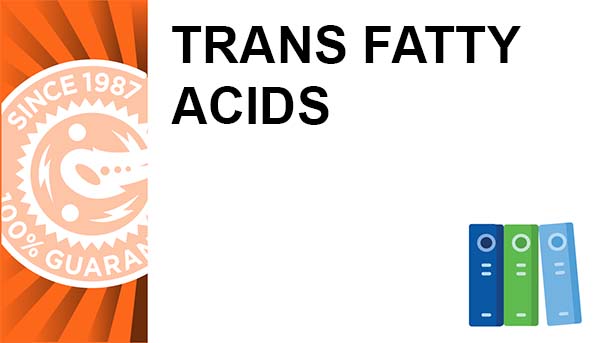Positioning
Here's how to position yourself during and the muscle under stimulation
The stimulation position depends on the muscular group to be stimulated. The various suggested positions are clearly indicated in pictograms at the bottom of the electrode placement guide book.
For programs that trigger off significant (tetanic) contractions, isometric work is recommended, i.e. the extremities of the limb should be fixed so that there is no significant movement. For example, when stimulating the quadriceps, the user should be in a seated position with the ankle fixed with straps to prevent extension of the knee.
Working in this way has a dual purpose: it both ensures greater safety and limits shortening of the muscle during the contraction, with the risk of sharp cramps under stimulation. As the contraction is particularly strong at the calf when the foot is extended, make sure that you have a sufficiently large weight on your shoulders (or using some other means) so that the contraction remains static.
With the exception of specific indications for a particular program, which you will find in the specific applications in your user manual, dynamic work should not be done without resistance.
For the other types of programs (for example Active Recovery program), which do not involve powerful muscular contractions, position yourself as comfortably as possible.
Warming Up
Begin your workout with Compex
All the programs involving significant (tetanic) contractions of the stimulated muscles automatically start with a warm-up sequence. This is indicated on the screen by an animated rising convection symbol above the heater symbol.
If no voluntary physical activity has been done in the minutes preceding the stimulation session, it is recommended that you do the warm-up. If the stimulation session is included in a voluntary training session and some voluntary activity immediately precedes the stimulation, you can skip the warm-up sequence. You can therefore delete the rising convection symbol (see procedure of chapter "Operating Instructions", section: "Personalizing the Program"), and the session will start directly with the specific work selected without any prior warm-up.
After the stimulation work sequence, a relaxation sequence starts automatically. This is to allow improvement in the recovery of a muscle after its work under Compex and to limit muscular aches to some extent. Unless you want to go on immediately to voluntary training stages, it is recommended that you let the last sequence go ahead. It is also recommended that you do some stretching of the muscles that you have just worked with the Compex, even if the stimulation seems to improve your muscular elasticity.
Setting the Intensity Levels
Customize the intensity to ensure your comfort.
For a muscle under stimulation, the number of recruited fibers depends of the intensity. It is therefore absolutely necessary to use maximum intensities so as to involve the greatest possible number of fibers. Below a significant intensity level, it is pointless for an average user to do stimulation sessions. In fact, the number of fibers involved in the stimulated muscle is too low for any interesting improvement in the performance of that muscle.
The progress of a stimulated muscle will be all the greater if a high number of its fibers are recruited by the Compex. If only 1/10 of the fibers of a muscle work under stimulation, only 1/10 can progress. That is obviously much less appreciable than if 9/10 of the fibers work and can therefore progress. You should therefore take care to work with maximum intensities, i.e., always at the limit of what you can support.
There is obviously no need for you to reach the maximum current strength right from the first contraction of the first session of the first cycle. If you have never used Compex stimulation before, you should do only half of the desired program during the first 3 sessions with sufficient intensity to produce powerful muscular contractions to familiarize yourself with the technique of electrostimulation. You can then start your first stimulation cycle with your own specific program and level. After the warm-up, which must produce very clear muscular twitches, you should raise the intensity progressively, from contraction to contraction, during the first three or four minutes of the work sequence.
You should also progress with intensities used from session to session, particularly during the first three sessions of a cycle. A normally prepared person will already reach very significant intensities during the fourth session.
Use During Voluntary Training
Tips to incorporate electrostimulation during your workout.
The stimulation sessions can be done outside or during voluntary training.
When voluntary training and stimulation are done during the same session, it is generally recommended that the voluntary training be done first followed by the stimulation. This means that the voluntary training is not done on muscle fibers which are already tired. This is particularly important for strength and explosive strength training.
However, in resistance training, it can be very useful to proceed in the reverse order. Before the voluntary training, by means of stimulation for resistance, a "specific pre-fatigue session" is carried out on the muscle fibers without general and cardio-vascular fatigue. In this way, the voluntary effort on the "prepared" fibers will push the glycolytic metabolism faster and further.
Scheduling the Stimulation Sessions
Incorporating Compex into your training regimen.
The question of the scheduling of the stimulation sessions during the week only arises in situations where at least two training sessions are to be done in the same week.
In cases where up to six sessions a week are planned, it is recommended that the sessions be scheduled as far apart as possible. For example, if you do three sessions a week, you should do them at the rate of one session every two days (one rest day twice and two rest days once every week). If you do six sessions, you should do six consecutive days of stimulation with one rest day.
Above seven sessions a week, it is advisable to group several sessions together on the same day to leave yourself one or two complete rest days without stimulation. If you do seven sessions a week, you should do five days of stimulation at the rate of one session per day, plus one two- session day (with at least a half-hour's rest between the sessions), leaving one rest day. If you do ten sessions a week should preferably do five two-session days (again with at least a half- hour's rest between the sessions), leaving two rest days.
Advancing Through the Levels
Progress through the electrical intensities and then through the levels.
In general, it is not advisable To go through the different levels quickly with the intention of reaching the highest level as fast as possible. The different levels correspond to progress in training and you must leave the muscles time to adapt, and time for the overcompensation to be put in place.
The most frequent error is to change from level to level as stimulation occurs at increasingly higher intensities. The number of fibers subjected to stimulation depends on the intensity. The nature and amount of work that these fibers do depend on the program and level. The aim is, first of all, to progress through the electrical intensities and then through the levels. The more numerous the muscle fibers you stimulate, the more numerous will be the fibers that are going to progress. But the speed of progress of these fibers and their aptitude for operating at a higher rating depend on the program and level used, the number of sessions per week and the length of these sessions, and also on intrinsic factors specific to each individual.
The simplest and most common procedure is to raise the level in the program selected when changing to a new stimulation cycle. It is also possible to go up a level in the course of the same cycle. In this case, it is advisable not to do so before working a minimum of three weeks at the same level.
Do not change level during an auxiliary or maintenance application. Do not change level either during a short intensive or aggressive cycle of three to four weeks. On the other hand, following the classic approach, during a six-week cycle, after three weeks you can change to the next level. Similarly, in an intensive or aggressive cycle of six to eight weeks, you can go up a level after three to four weeks.









